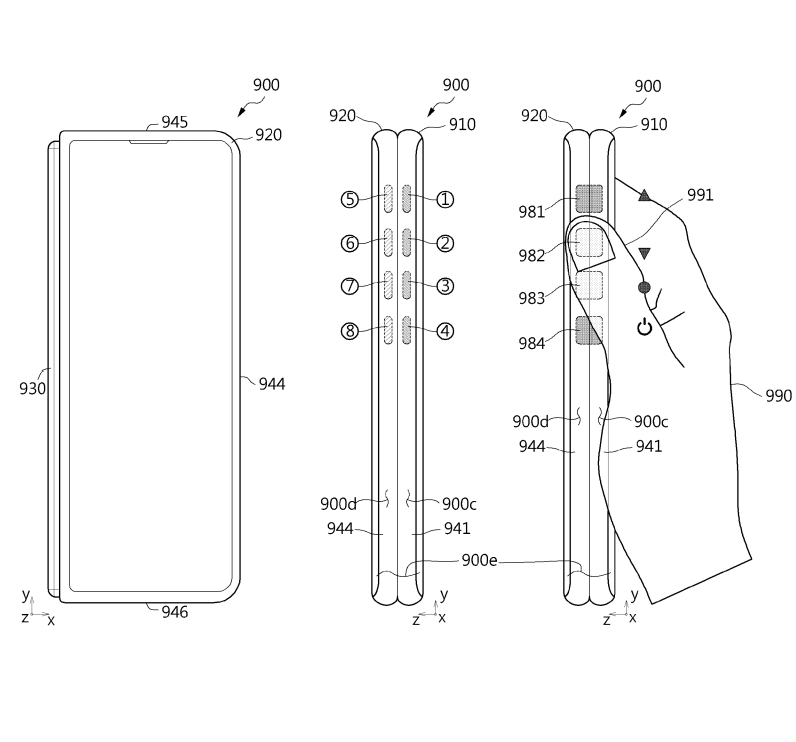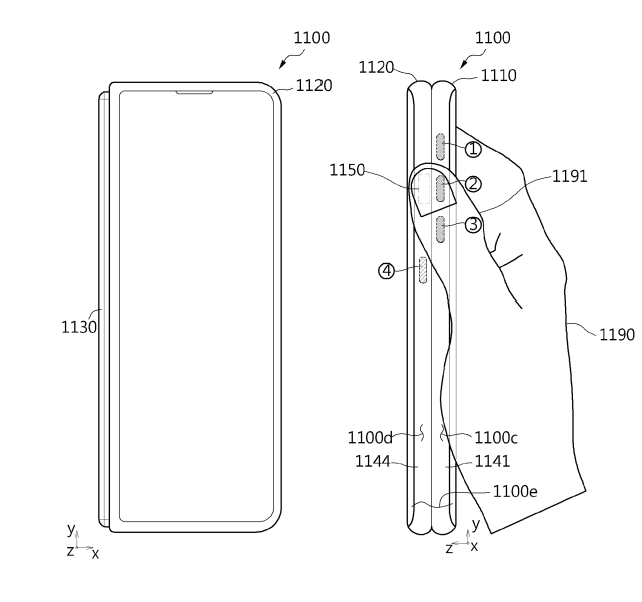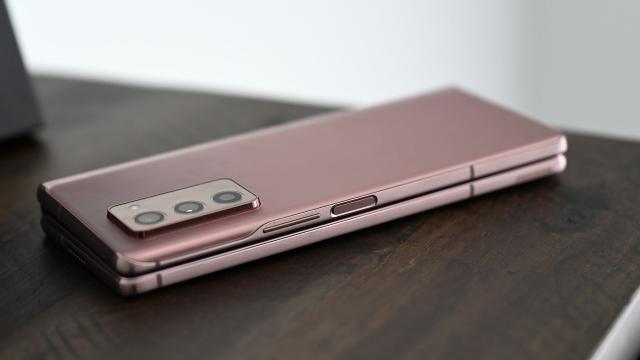While device makers continue to refine the design of today’s foldable phones, a new patent recently granted to Samsung suggests that it could ax the physical buttons on a future Galaxy Z Fold and go with touch controls instead.
First spotted by Let’s Go Digital, Samsung’s plans for touch-based gesture controls are detailed in a patent that was filed with the WIPO (World Intellectual Property Organisation) late last year before being published recently on May 20.
Samsung’s goal with the patent is to swap out the traditional side-mounted physical buttons found on most phones today with touch sensors that support gestures controls, allowing you to do things like lock your phone and adjust the volume by simply touching the side of the phone, while also supporting more sophisticated gesture controls for pause, play, skip, and others.

Going forward, one of the big issues for foldable phones is that as device makers continue to slim down these devices, there’s less and less room along the edges of these devices for installing physical buttons, to the point that continuing to rely on discrete buttons could jeopardise a device’s structural integrity. Not only could the use of physical buttons create a weak spot on the edge of the phone, but the force required to push those buttons could also put extra pressure on a foldable phone’s hinge, which could result in reduced durability or longevity down the line.
According to the patent, one interesting benefit of touch controls is that they would allow a foldable phone’s virtual buttons to span both sides of the phone when closed, unlike the physical buttons on the Galaxy Z Fold 2, whose buttons had to be shoehorned onto just one edge. Furthermore, in addition to touch controls, the patent also mentions support for pressure sensors, which would add squeeze gestures to the mix.

That said, the big hurdle Samsung will need to overcome is that this isn’t the first time a company has tried to replace a phone’s physical buttons with touch controls, and up until now, no company has really managed to do it right. One of the first phones to test out virtual buttons was HTC’s U12+ back in 2018, which traded discrete buttons for touch sensors, but strangely, still left an awkward button-like protrusion on the side of the phone, ostensibly to mark the location of the phone’s virtual button. Unfortunately, while it was a very forward-thinking move, the move to touch controls on the U12+ never worked, and the unit suffered from weak sales.
On more recent phones with touch controls on their sides, companies have started to leave the side of the device bare with the expectation that users will learn where the buttons are over time via muscle memory, which is a small improvement but still requires a learning curve that most people don’t want to deal with. So before Samsung can make the switch to touch buttons on a future Galaxy Fold, it will need to perfect the way touch controls are presented to the user.
While the patent doesn’t specifically mention which Samsung device will be the first to feature the touch controls described in the patent, with Samsung expected to release its next Galaxy Fold device sometime in August, it’s somewhat unlikely that Samsung would have these touch controls ready to put in a retail device that soon. But who knows, Samsung usually has a few surprises planned for its marquee devices, and even if these touch controls don’t appear on a device this year, there’s always the generation after that.
